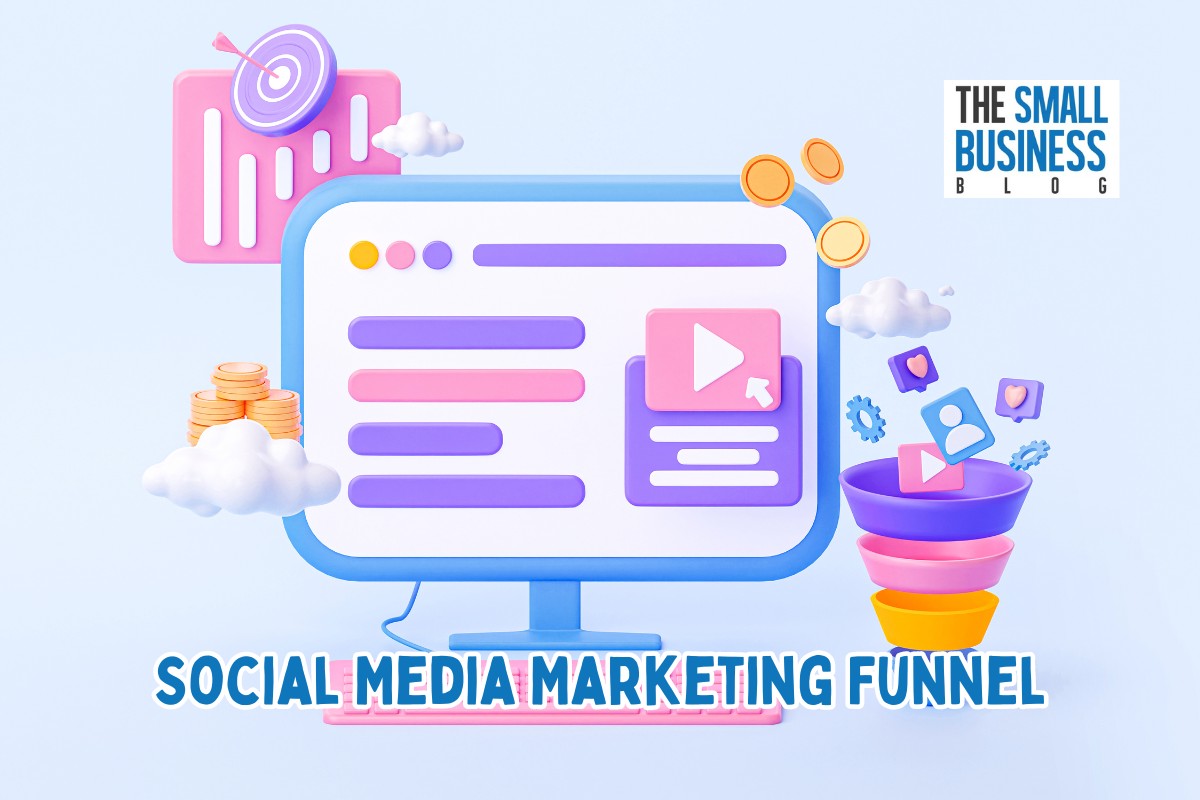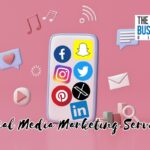Social media has become an integral part of modern marketing strategies, and understanding how to maximize your online impact through a well-optimized social media marketing funnel is crucial.
In this article, we’ll delve into the different stages of the funnel, exploring strategies to enhance awareness, consideration, action, engagement, and advocacy.
Post Contents
- 1 What Is a Social Media Marketing Funnel?
- 2 Importance of Maximizing Online Impact
- 3 The 5 Components Of a Social Media Marketing Funnel
- 4 Addressing Challenges in Social Media Marketing Funnels
- 5 Frequently Asked Questions
- 6 Conclusion
What Is a Social Media Marketing Funnel?

The social media marketing funnel is a strategic framework meticulously designed to navigate users through distinct stages of their online journey, encompassing the entire spectrum from initial awareness to fostering unwavering brand advocacy.
At its core, it serves as a roadmap, guiding potential customers through a purposeful progression, culminating in a meaningful and long-lasting connection with a brand.
A nuanced understanding of this concept is not just beneficial but imperative for businesses aiming to carve out a successful online presence.
Each stage within the funnel is carefully crafted to address specific aspects of the user’s experience, ensuring a comprehensive and strategic approach to online marketing.
Importance of Maximizing Online Impact
In an era dominated by the digital realm and characterized by fleeting attention spans, the significance of optimizing your online impact cannot be overstated.
Effective social media marketing is the linchpin that can propel a brand to new heights of visibility, engagement, and influence.
The digital landscape is saturated with content vying for user attention.
Hence, making the most of your online impact becomes not just a goal but a necessity.
It’s about crafting a resonant narrative, creating captivating content, and strategically positioning your brand to stand out amidst the digital noise.
Moreover, the impact of effective social media marketing extends beyond mere visibility; you need to build a community, spark conversations, and cultivate relationships that transcend transactional exchanges.
The 5 Components Of a Social Media Marketing Funnel
The social media marketing funnel is made out of five core components.
Each component uniquely guides users through awareness, consideration, action, engagement, and advocacy.
Let’s dissect each component now.
1. Awareness Stage

First up is the Awareness Stage.
This initial phase is akin to casting a wide net, introducing your brand to a broad audience.
Creating Compelling Content
In the dynamic landscape of social media, creating compelling content is the linchpin of the awareness stage.
This content serves as the initial introduction of your brand to potential customers.
Effective range isn’t just about aesthetics; it’s about telling a story that resonates with your audience.
Craft narratives that evoke emotions and connect with your audience personally.
Share behind-the-scenes glimpses, success stories, or relatable experiences to make your brand more relatable.
Explore various content formats like blog posts, infographics, and podcasts.
Diversifying your content keeps your audience engaged and caters to different preferences within your target demographic.
You should maintain a consistent brand voice and image across all social media platforms.
Consistency breeds familiarity, making it easier for users to recognize and remember your brand.
Utilizing Visual Elements for Engagement
Visual elements are powerful tools for capturing attention in the vast sea of social media.
They provide a quick and impactful way to convey messages, making your content more memorable.
Invest in high-quality images and videos that align with your brand identity.
Clear visuals catch the eye and communicate professionalism and attention to detail.
Also, create infographics to present complex information in a visually appealing and easy-to-understand format.
Infographics are shareable, increasing the likelihood of your content reaching a wider audience.
Consider incorporating interactive elements like polls, quizzes, or clickable images.
Interactivity encourages engagement and active participation, fostering a sense of connection with your brand.
2. Consideration Stage

Moving seamlessly into the Consideration Stage, we transition from initial awareness to building a lasting brand presence.
Here, the focus is on establishing a solid and recognizable identity.
Building a Strong Brand Presence
Building a robust and recognizable brand presence becomes paramount as users enter the consideration stage.
Clearly define your brand identity, including your mission, values, and unique selling propositions.
A well-defined brand identity helps users understand what differentiates your brand from the competition.
Ensure that your messaging remains consistent across all touchpoints.
Whether it’s your website, social media profiles, or marketing materials, a cohesive message instills trust and credibility.
Incorporate branding elements such as logos, color schemes, and fonts consistently.
These visual cues help instant brand recognition, making your brand more memorable.
Leveraging User-Generated Content
User-generated content (UGC) is a potent tool for building trust and influencing potential customers during consideration.
Request and showcase customer reviews and testimonials because positive reviews act as social proof, reinforcing the reliability and quality of your products or services.
Feature user stories through testimonials, case studies, or even spotlighting user-generated content on your social media platforms.
Another thing is actively engaging with your audience and responding to comments and messages.
Acknowledging and appreciating user-generated content fosters a sense of community around your brand.
3. Action Stage

In the action stage, your audience transitions from passive observers to active participants.
Calls-to-action
Crafting effective calls-to-action (CTAs) is paramount in guiding your audience to take specific actions that align with your business goals.
Ensure that your CTAs are clear and straightforward.
Ambiguity can lead to confusion and reduced conversion rates.
Use concise language that conveys precisely what you want your audience to do.
Your calls to action should have an element of urgency to encourage quick response.
Words like “exclusive deal” or “limited-time offer” incite consumers to act quickly by instilling fear of missing out (FOMO).
Strategically place your CTAs where they are easily noticeable.
Whether in a social media post, email, or on your website, the visibility of your CTAs directly impacts their effectiveness.
Implementing Targeted Advertising Strategies
Targeted advertising is a powerful tool in the action stage, allowing you to reach specific demographics precisely.
Tailoring your ads to the interests and behaviors of your target audience increases the likelihood of conversion.
Segment your audience based on demographics, interests, and behaviors.
This allows you to create highly targeted ads that resonate with specific groups, increasing the relevance of your messaging.
Craft personalized ad content that speaks directly to the needs and preferences of your target audience.
Personalization enhances the user experience and fosters a stronger connection with your brand.
Continuously refine your ad strategy through A/B testing.
Experiment with different ad creatives, copy, and targeting parameters to identify what resonates best with your audience and drives the desired actions.
4. Engagement Stage

The engagement stage marks a pivotal point in your social media marketing funnel, emphasizing the importance of fostering two-way communication with your audience.
This stage is not just about broadcasting your message; it’s about creating a dialogue.
Here’s how you can actively engage your audience:
Respond promptly to comments, messages, and mentions.
Acknowledging and engaging with your audience demonstrates that you value their input and creates a sense of community around your brand.
Create content that encourages interaction.
Polls, quizzes, and contests are excellent tools for eliciting responses and participation from your audience.
It not only boosts engagement but also generates valuable insights.
Utilizing Social Media Analytics
Understanding your audience’s behavior is crucial for refining your social media strategy.
Leveraging analytics tools provides valuable insights that empower you to create content that resonates with your audience.
Monitor key metrics such as engagement rate, reach, and click-through rate.
These metrics provide a quantitative understanding of how your content is performing and what interests your audience.
Explore the demographics of your audience.
Knowing your followers’ age, location, and interests helps you better tailor your content to suit their preferences.
5. Advocacy Stage

In the advocacy stage, satisfied customers evolve into advocates who willingly promote your brand.
Identifying and nurturing these advocates is crucial for amplifying your brand’s reach.
Regularly monitor social media mentions and interactions to identify customers who consistently express satisfaction with your brand.
These are potential brand advocates.
Engage with them directly, express appreciation for their loyalty, and make them feel valued as part of your brand community.
Showcase your brand advocates by featuring them in your content; this could include customer spotlights, testimonials, or collaborative content highlighting their favorable experiences with your products or services.
Leveraging Influencer Partnerships
Influencers can play a pivotal role in amplifying your brand message and building trust with their dedicated followers.
Choose influencers whose values align with your brand.
Authenticity is vital, and influencers who genuinely resonate with your brand will create more meaningful connections with their audience.
Consider collaborating with micro-influencers who have smaller but highly engaged audiences.
Their authenticity and relatability often result in higher conversion rates.
Involve influencers in the co-creation of content, as it brings a fresh perspective and allows their audience to see a genuine connection between the influencer and your brand.
Addressing Challenges in Social Media Marketing Funnels
Navigating the social media marketing landscape is not without its challenges.
Recognizing and addressing these hurdles is vital for maintaining a healthy and efficient funnel.
Let’s delve into everyday challenges and practical solutions:
Ad Fatigue
Challenge: Overexposure to ads can lead to ad fatigue, diminishing their impact.
Solution: Rotate ad creatives regularly, experiment with new formats, and tailor content to match evolving audience interests.
Audience Saturation
Challenge: Reaching the same audience repeatedly may result in diminished returns.
Solution: Expand your target audience, refine targeting parameters, and explore new demographics to keep your reach fresh.
Content Relevance
Challenge: Ensuring your content remains relevant amidst evolving trends.
Solution: Stay abreast of industry trends, conduct regular content audits, and adapt your strategy to align with the ever-changing digital landscape.
Frequently Asked Questions
What is the primary goal of a social media marketing funnel?
The primary goal is to guide users through awareness, interest, and conversion stages using tailored content and strategies.
What are some key performance indicators (KPIs) for tracking social media funnel success?
KPIs include engagement rates, conversion rates, click-through rates, and overall ROI from social media campaigns.
How can businesses adapt their social media funnel strategies for different platforms?
Businesses should understand the unique dynamics of each platform and tailor content to match the preferences of the audience on that platform.
Conclusion
A well-optimized social media marketing funnel is the key to maximizing your online impact.
By understanding the distinct stages, tailoring your content, and staying adaptable to industry trends, your business can build meaningful connections and drive conversions.






























